Fish stocking advice: knowing your lake is the key to effective stocking
By Matt Ward
Looking out across the country, you can see countless waterbodies dotting the landscape – ponds and lakes of every size.
Most will have fish, but they’re subject to endless pressures: droughts that constrain fisheries; floods that scatter fish about the countryside; waterfowl gathering calories for migration; fishermen invited or not who ply their lines; or even otters grabbing a meal as they pass through the landscape.
Sooner or later virtually all water bodies will need to be stocked with fish in order to support healthy fisheries. Whether minimal inputs or high-catch rates are your game, thoughtful stocking is key to lake success and effective fishery management.
Let’s take a look at a handful of the most popular fisheries and discuss how pond stocking can best be employed.
New Lakes
New lakes offer the most opportunities for lake owners.
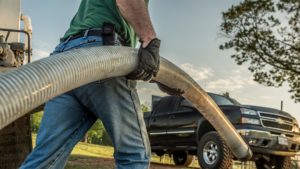 Careful selection of the timing of introduction, species, and numbers of fish stocked is key to producing the kind of fishery a lake manager wants. A good pond stocking plan should take into account expectations during a drought, the desired fishery outputs, water body physical composition and available cover. A good pond stocking plan should also be preceded by water testing to make sure all is in order.
Careful selection of the timing of introduction, species, and numbers of fish stocked is key to producing the kind of fishery a lake manager wants. A good pond stocking plan should take into account expectations during a drought, the desired fishery outputs, water body physical composition and available cover. A good pond stocking plan should also be preceded by water testing to make sure all is in order.
Trophy Bass
If you are looking for a trophy bass fishery, you will need to introduce forage fish at the right time, helping small forage to peak at the time that you introduce fingerling Florida bass.
Trophy fisheries are relatively low-density fisheries and so a pond stocking plan should be put in place to boost your lake’s carrying capacity if you want consistent catch rates. This should be accomplished with pelleted fish food and/or supplemental forage.
Feed-trained Largemouth
Other popular fishery options include feed-trained largemouth bass, which can provide some of the highest catch rates around.
Well over 100 feed-trained bass can be stocked per acre as long as feeding rates are kept up. This kind of fishery is ideal for casual fishermen, the young, or the young at heart. Feed-trained bass can easily hit weights of 5 pounds or more. While feed-trained bass are fertile, young do not learn to eat fish food so restocking is needed to maintain their populations.
Hybrid Striped Bass
Hybrid striped bass can also be stocked at high rates allowing for exciting fishing.
Hybrids are sterile, but rapidly grow to 5 pounds with some achieving well over 10 pounds in weight. These fish are relatively inexpensive and sold at small sizes that rapidly grow into hard-fighting bruisers.
Contrary to popular belief, hybrids can be stocked in small waters and often offer a tremendous option for small pond owners. Most hybrids live for seven or eight years in the South, achieving much greater ages in the North. Restocking should be planned to maintain populations.
Catfish
A quality catfish pond should almost always be stocked with channel catfish. Blue catfish do grow larger and can be stocked if desired, though these apex predators usually grow so large that only low numbers of fish can be supported in a given pond or lake.
Flathead catfish are even more problematic and tolerate even lower stocking densities. In channel catfish fisheries baitfish are beneficial though their value is secondary to pelleted fish food for feeding the fish.
Channel catfish taste excellent and can be stocked in relatively high numbers when supported with supplemental feed. Up to 500 catfish can be stocked per acre. Higher stocking rates should be accompanied with high harvest to keep the fishery healthy.
In the aquaculture industry, channels are normally grown to a couple of pounds before harvest so plans should be made to begin harvest of channel catfish within a year or two of stocking to keep populations in check as the pond ages.
Existing Fisheries
Existing fisheries may require stocking for a variety of reasons.
Put-and-take fisheries with feed-trained bass, hybrids and catfish should be restocked to maintain populations of a finite resource of fish. Forage fish may need to be stocked to recover a population if predator fish populations exceed their food source.
Lakes that recover from droughts often need stockings to recover fish populations that have shrunk with falling water levels. Some situations are simple, but most require an intimate knowledge of the fishery to be correctly selected.
Effective stockings of existing fisheries should generally be preceded by a thorough survey of the fishery. Beware of services that offer to stock large numbers of fish without taking the time to know your fishery.
One stocking you can generally pursue without a prior fishery survey is Rainbow Trout. Rainbow Trout provide an exciting winter fishery when stocked in sufficient densities.
These fish won’t survive long once water temperatures warm in spring, but can provide excellent table fare in the meantime. That being said, trout are predatory fish so do know that trout will generally lower forage populations over the winter, so be sure to provide them with plenty of fish food to minimize forage loss.
The key to getting the most from your body of water is to develop a strategic pond stocking plan as central to your fishery management.
When deciding what fish to stock, make sure that your pond stocking plan is developed by an experienced biologist with a solid reputation. Good biologists will design a pond stocking plan that will help you efficiently pursue your fishing goals for years to come. When you get your stocking plan, ask if the person you hire will provide support as needed after the initial stocking.
Ponds and lakes are dynamic environments that can experience a variety of problems that may require intervention. An ounce of prevention … well, you get the idea ….
Why Choose Lochow Ranch for Pond & Lake Management
Serving Texas, Oklahoma, Arkansas and Louisiana, Lochow Ranch Pond & Lake Management proudly puts more than two decades of experience to work for you. Our team includes biologists, technicians and other professionals with deep expertise in pond and lake management services.
Check us out if you are considering building a lake, looking for pond stocking services, to buy fish for a pond, or getting professional pond management and maintenance or fishery management. Our services include lake design, pond construction, pond renovation, pond water testing, electrofishing, pond stocking, control of pond weeds, and pond liming and fertilizing. Let us help you build your dream pond that will delight your family and friends for generations to come.
Click here to get in touch to get started today.
Matt Ward is a Fishery Biologist for Lochow Ranch Pond & Lake Management. He has a Master of Science in Biochemistry from Texas A&M University and has worked in fisheries management in Texas for 15 years. He brings a passion for good science and an interdisciplinary approach to the natural sciences to help property managers steward their aquatic resources and achieve management objectives.
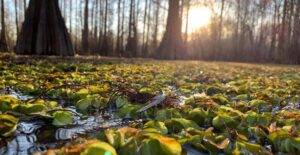
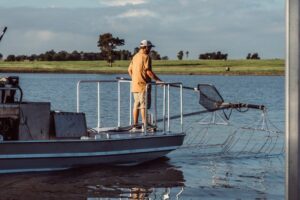
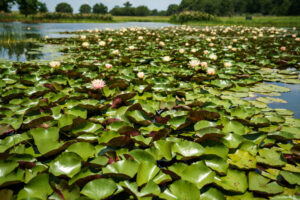 Fertilization is recommended from March-September.
Fertilization is recommended from March-September.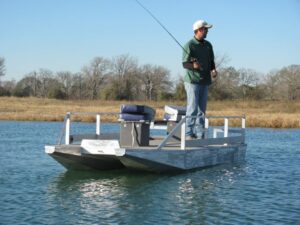 These months are the best time to just chill out and enjoy your lake or pond if you’ve been on top of your fishery management needs.
These months are the best time to just chill out and enjoy your lake or pond if you’ve been on top of your fishery management needs.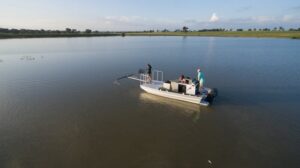
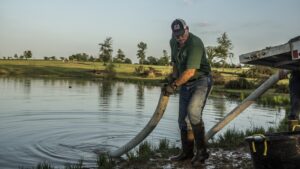 What kinds of fish will work best in your body of water involves many variables, including your own goals for your pond or lake. For example, you need to carefully assess the impact of introducing non-native species into your pond. It’s important to be aware of the fish types that can live together in harmony so your pond can sustain a healthy eco-system.
What kinds of fish will work best in your body of water involves many variables, including your own goals for your pond or lake. For example, you need to carefully assess the impact of introducing non-native species into your pond. It’s important to be aware of the fish types that can live together in harmony so your pond can sustain a healthy eco-system.
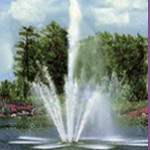 In order to avoid catastrophe, pond and lake owners currently should be inspecting aeration and
In order to avoid catastrophe, pond and lake owners currently should be inspecting aeration and 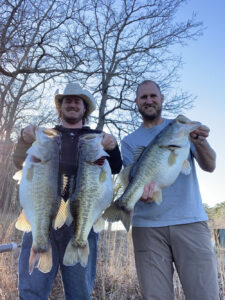 Your pond can become a fishing paradise that you, your family and friends will enjoy for generations.
Your pond can become a fishing paradise that you, your family and friends will enjoy for generations.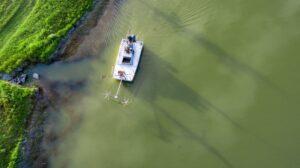 Electrofishing is safe and effective and does not harm fish.
Electrofishing is safe and effective and does not harm fish.
Recent Comments